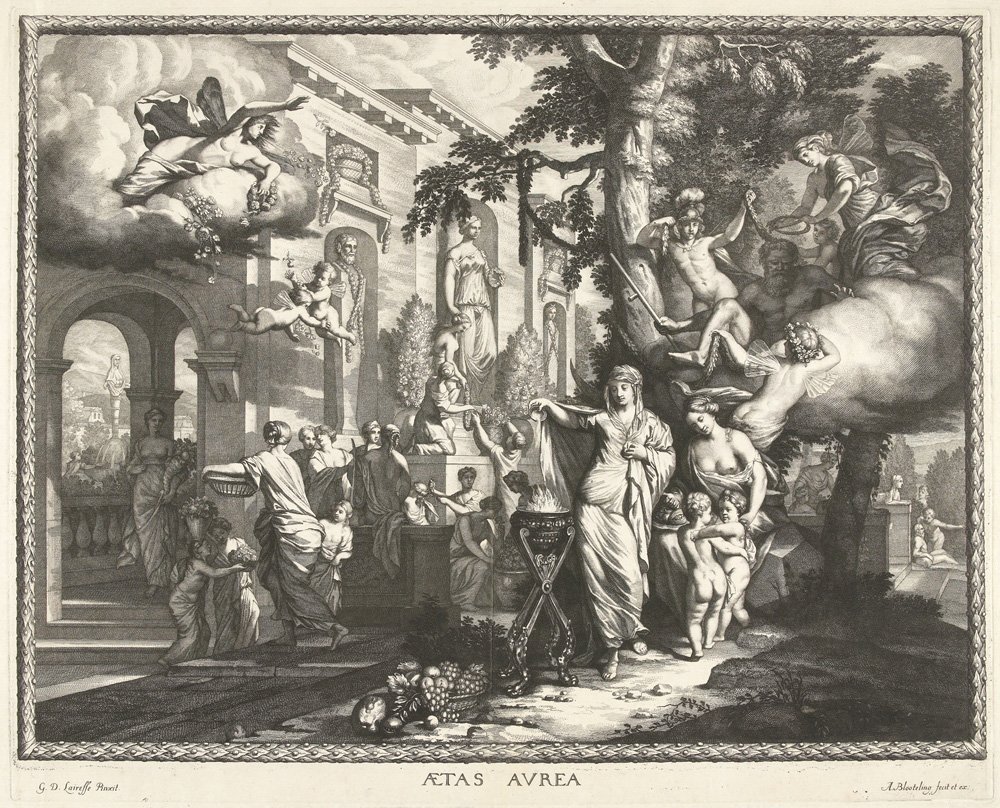Abraham Blooteling
Abraham Blooteling (Amsterdam 1640–Amsterdam 1690) was a technically brilliant engraver and one of the most significant early mezzotint printmakers. He was apprenticed to the engraver Cornelis van Dalen the Elder (c.1602–1665) and received further training from Pieter van Schuppen (1629–1702) in Paris between 1660 and 1662. After his return to Amsterdam he cooperated with Van Dalen again, who named Blooteling his universal heir.
The talented artist Wallerant Vaillant (1623–1677) moved to Amsterdam in 1665 where he practiced the printmaking technique of mezzotint. Vaillant had encountered Prince Rupert of the Rhine (1619–1682) in Frankfurt in 1658 and through him became involved in the development of the new mezzotint process. Blooteling likely first met Vaillant when both were living in Paris in the early 1660s. In Amsterdam, Blooteling made prints after portraits drawn by Vaillant and produced his first dated mezzotint The Flute Player (H. 273) after Govert Flinck in 1667. Blooteling further refined the mezzotint technique and his prints show a larger tonal scale and finer details compared to the earliest mezzotints.
He set up his own printmaking studio, taking Johannes Willemsz. (van) Munnickhuysen (1654/55–after 1701), Gerard Valck (1651/52–1726) and Abraham Meindersz van der Wenne (1657–1681) as his apprentices. He created book illustrations, prints and series of prints after many artists. He arguably produced his best works in cooperation with Gerard de Lairesse (1640–1711).
Blooteling moved to London in January 1673 at the request of Prince Rupert of the Rhine (1619–1682) who had introduced the mezzotint process to England. He engraved the prince’s portrait later that year. Blooteling brought to London his sister Maria (1645–1729) and his apprentices Munnickhuysen, Valck and Van der Wenne. Blooteling came into contact with the court painter Peter Lely (1618–1680) and produced many prints after his portraits.
Back in Amsterdam in 1678, Blooteling witnessed the baptism of Abraham, son of his sister Maria and Gerard Valck, and a year later became poorter (citizen). The Staten van Holland en West-Friesland granted Blooteling and Valck a joint privilege for all of their prints in 1684. Blooteling subsequently worked more as a publisher and acquired old copperplates publishing restrikes of them, including those of Jacques Jordaens. He also kept producing prints after Lely and worked for English publishers.
Blooteling was a productive and influential printmaker who contributed to the spread of the mezzotint technique. Among his masterpieces are his spectacularly large portraits of Charles II, James, Duke of York and James Scott, Duke of Monmouth. These stood at the start of the English mezzotint tradition that reached its peak in the eighteenth century. After Blooteling’s death Valck acquired his plates and republished many of them. The New Hollstein compilation will count an estimated 800 prints by, after and published by Blooteling.
Compiler: Ad Stijnman
Editor: Simon Turner


